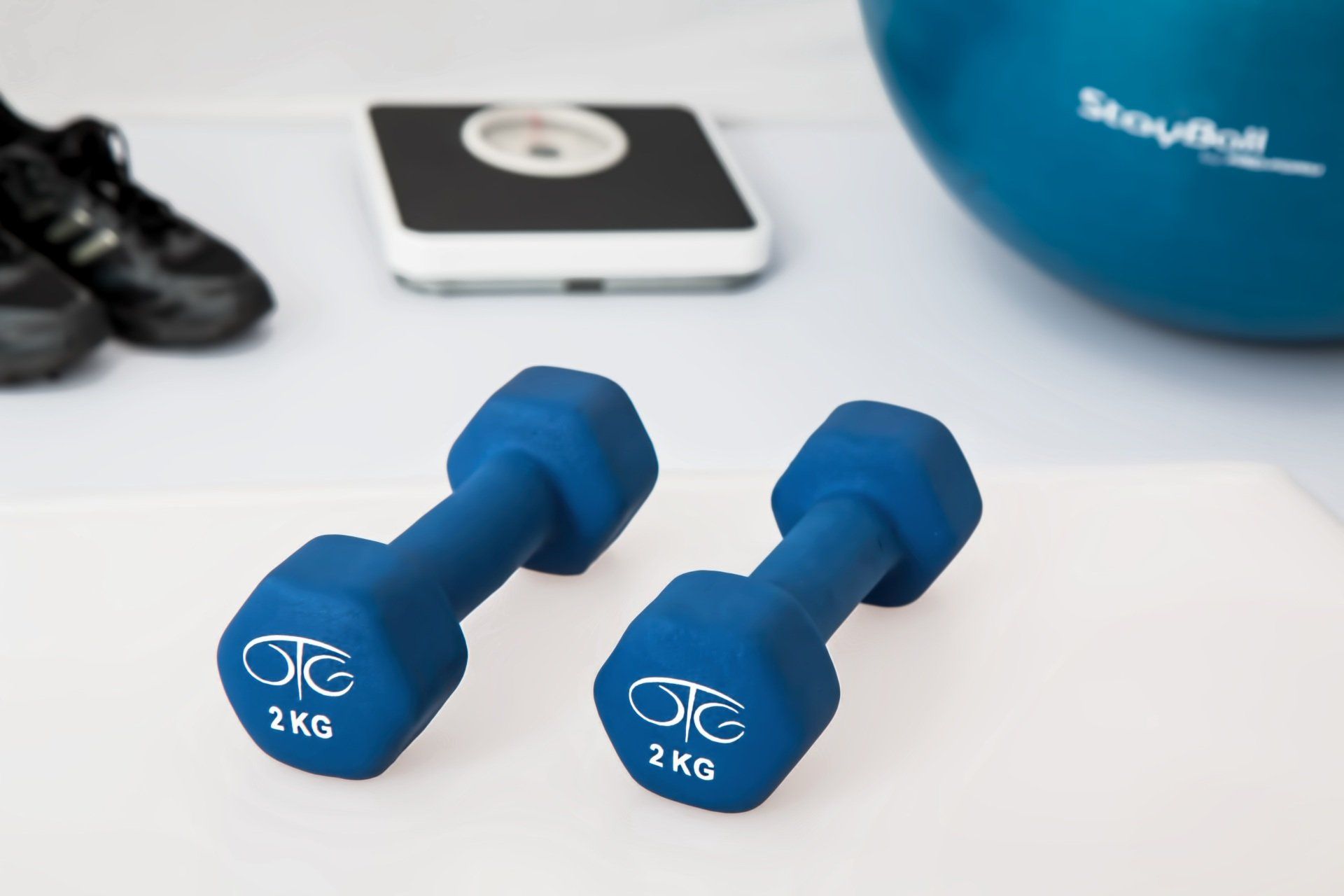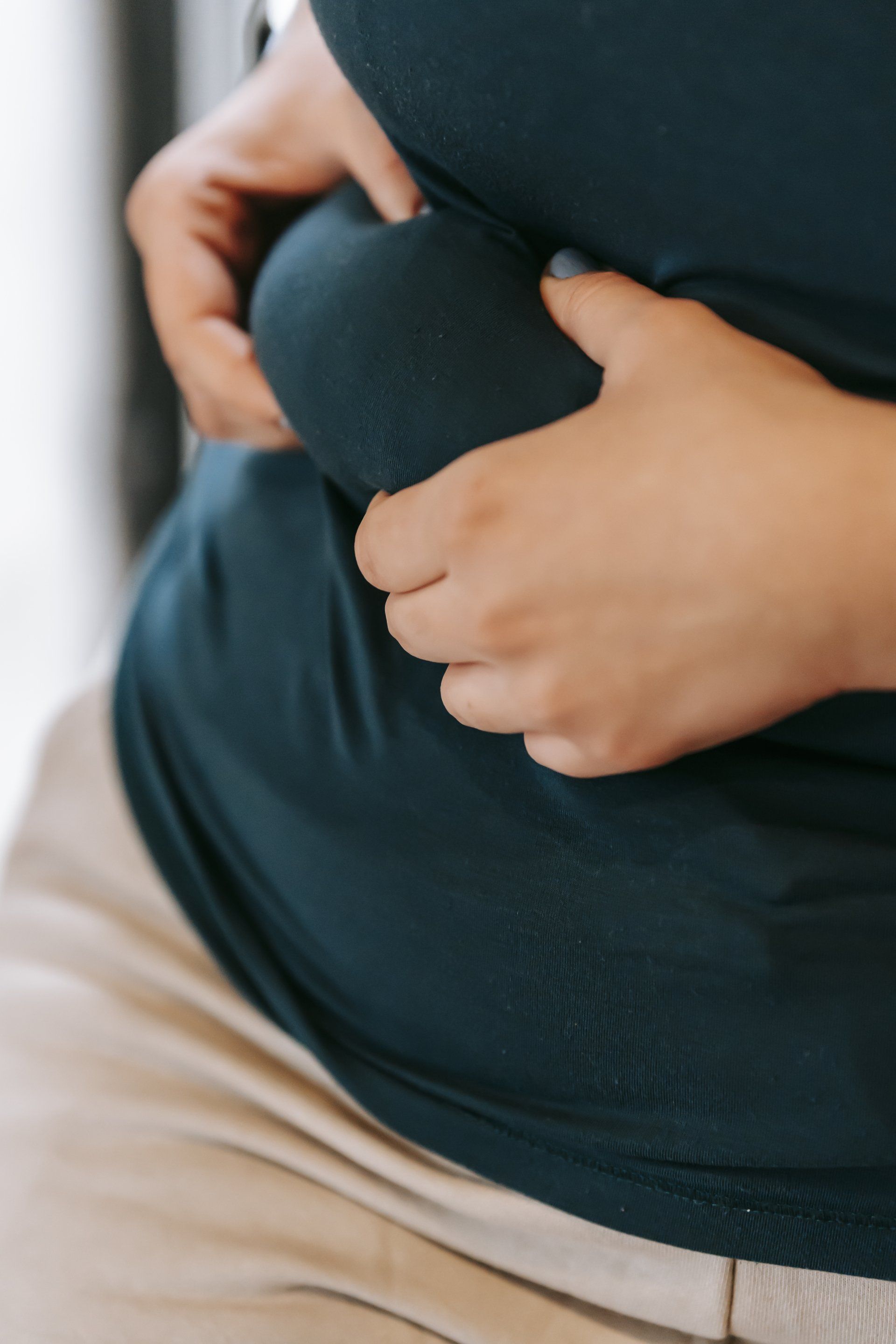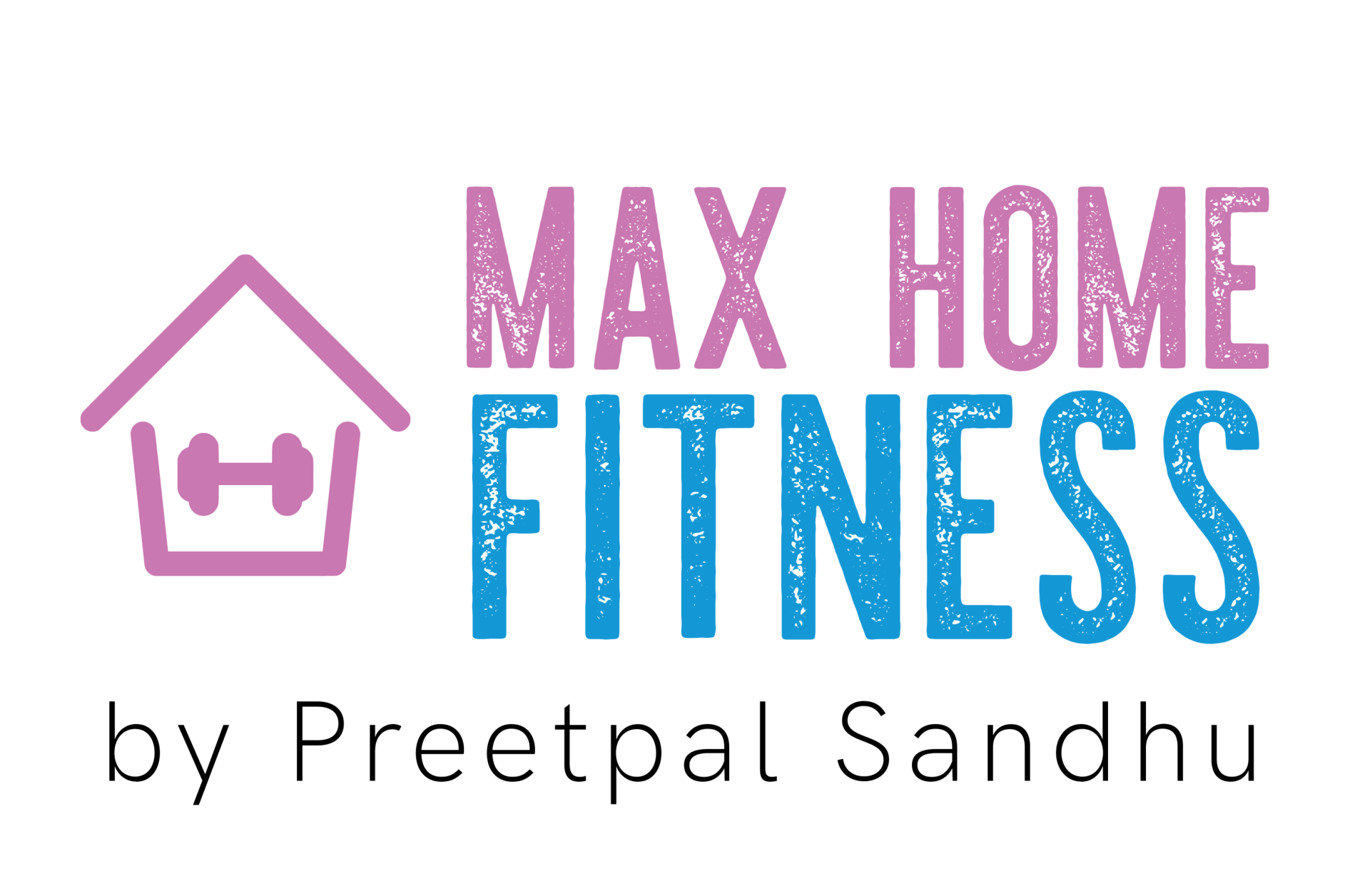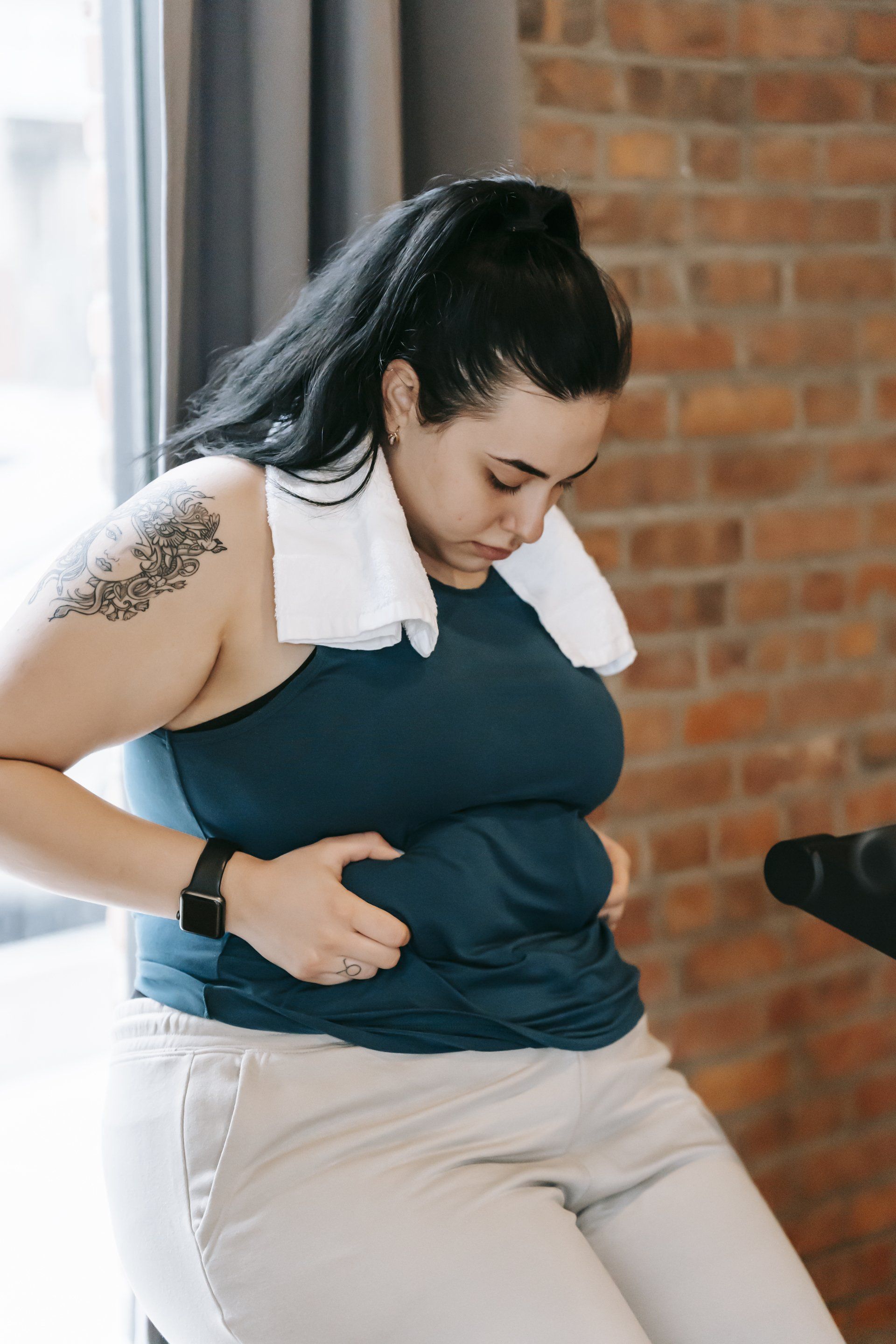12 Common Mistakes When Trying to Lose Weight
Franziska Spritzler • September 16, 2021
12 Common Mistakes When Trying to Lose Weight
Losing weight can be challenging for some people.
Sometimes you might feel like you’re making healthy lifestyle choices, yet you’re still not getting the results you want.
You may, in fact, be following misguided or outdated advice. This may prevent you from seeing the changes you’re looking for.
Here are 12 common mistakes people make when trying to lose weight.
1. Focusing only on the scale
It can be common to feel like you’re not losing weight fast enough, despite following a healthy lifestyle. It’s important to remember that the number on the scale is only one measure of weight change. Weight is influenced by several things, including fluid fluctuations and the amount of food that remains in your system.
In fact, weight may fluctuate around 2 to 4 pounds over the course of a few days, depending on factors like how much food and liquid you’ve consumed.
Also, hormonal changes in women can lead to greater water retention, which is reflected in the weight you see on the scale.
If the number on the scale isn’t moving, you may be losing fat mass but holding on to water. Additionally, if you’ve been working out, you may be gaining muscle and losing fat.
When this happens, your clothes may start to feel looser — especially around the waist — even if the number on the scale remains the same.
Measuring your waist with a tape measure and taking monthly pictures of yourself can indicate if you’re losing fat, even if the scale number doesn’t change much.
SUMMARY
Many factors can affect scale weight, including fluid fluctuations, muscle mass gain, and the weight of undigested food. You may be losing body fat even if the scale reading doesn’t change much.
2. Eating too many or too few calories
A calorie deficit is required for weight loss. This means you need to burn more calories than you consume. For many years, it was believed that a decrease of 3,500 calories per week would result in 1 lb (0.45 kg) of fat loss. However, recent research shows the calorie deficit needed varies from person to person.
You may sometimes feel as though you’re not eating very many calories, and this may be the case. However, studies indicate that people often tend to incorrectly estimate the number of calories in a meal.
One study asked adults to exercise on a treadmill, estimate the number of calories they burned, and then suggest a meal with the same number of calories. It found that participants significantly underestimated and overestimated calories in exercise and food.
You may be consuming foods that are healthy but also high in calories, such as nuts and fish. Eating moderate portion sizes is key.
On the other hand, decreasing your calorie intake too much can be counterproductive. Studies on very low calorie diets indicate they may lead to muscle loss and significantly slow down metabolism.
SUMMARY
Consuming too many calories can keep you from losing weight. On the other hand, too few calories can make you hungry and reduce your metabolism and muscle mass.
3. Not exercising or exercising too much
During weight loss, you inevitably lose some muscle mass as well as fat, although the amount depends on several factors. If you don’t exercise at all while restricting calories, you’re likely to lose more muscle mass and experience a decrease in metabolic rate.
By contrast, exercising may help:
- minimize the amount of lean mass you lose
- increase fat loss
- prevent your metabolism from slowing down
The more lean mass you have, the easier it is to lose weight and maintain the weight loss. However, over exercising can also cause problems.
Excessive exercise is unsustainable in the long term for most people and may lead to stress. In addition, it may negatively impact endocrine hormones, which help regulate functions throughout your body.
Trying to force your body to burn more calories by exercising too much is neither effective nor healthy.
However, lifting weights and doing cardio several times per week can be a sustainable strategy for maintaining metabolic rate during weight loss.
SUMMARY
A lack of exercise can lead to loss of muscle mass and lower metabolism. On the other hand, too much exercise is neither healthy nor effective, and it may lead to severe stress.
4. Not lifting weights
Performing resistance training can greatly promote weight loss.
Studies show lifting weights is one of the most effective exercise strategies for gaining muscle and increasing metabolic rate. It also improves strength and physical function and may help increase belly fat loss.
In fact, a review of 32 studies including more than 4,700 people with obesity found the best strategy for reducing fat appears to be combined aerobic exercise and weightlifting.
SUMMARY
Weightlifting or resistance training can help boost metabolic rate, increase muscle mass, and promote fat loss.
5. Choosing low fat or “diet” foods
Processed low fat or “diet” foods are often considered healthy choices that can help you lose weight. However, they may have the opposite effect.
Many of these products are loaded with sugar to improve their taste. For instance, a 6-ounce container (170 grams) of low fat flavored yogurt can contain 23.5 grams of sugar (over 4 teaspoons).
The Centers for Disease Control and Prevention (CDC) recommends that a 2,000-calorie diet include less than 12 teaspoons of added sugar per day.
Low fat products can also make you feel hungrier, so you may end up eating more food than your body needs.
Instead of low fat or “diet” foods, try to choose a combination of nutritious, minimally processed foods. When possible, choose fruits and vegetables — this includes canned and frozen varieties — because they are naturally low in fat but also packed with nutrients.
SUMMARY
Fat-free or “diet” foods are typically high in sugar and may lead to hunger and eating more calories than your body needs.
6. Overestimating how many calories you burn during exercise
Many people believe that exercise “supercharges” their metabolism. Though exercise increases metabolic rate somewhat, it may be less than you think.
Studies show that people with moderate weight and overweight both tend to overestimate the number of calories they burn during exercise, often by a significant amount.
People may also overestimate their exercise levels. In one study, 29.1% of participants reported higher physical activity levels than they actually had.
Exercise is still crucial for overall health and can help you lose weight. It’s good to understand how much exercise you’re getting and the number of calories it burns.
SUMMARY
Studies show that people tend to overestimate the number of calories they burn during exercise.
7. Not eating enough protein
Getting enough protein is important if you’re trying to lose weight. In fact, protein has been shown to help with weight loss in several ways.
It may :
- reduce appetite
- increase feelings of fullness
- lower the amount of weight regained
- maintain or increase metabolic rate
- protect muscle mass during weight loss
A review also found that higher protein diets, containing 0.6–0.8 grams of protein per lb (1.2–1.6 g/kg), may benefit appetite control and change body composition.
To help with weight loss, try to make sure each of your meals contains a high protein food. Keep in mind your choice of protein isn’t limited to meat or dairy. Beans, legumes, quinoa and flaxseeds are also great and affordable options.
SUMMARY
High protein intake may promote weight loss by reducing appetite, increasing feelings of fullness, and boosting metabolic rate.
8. Not eating enough fiber
A low fiber diet may be hurting your weight loss efforts, along with your overall health.
Studies show a type of soluble fiber known as viscous fiber helps reduce appetite by forming a gel that holds water. This gel moves slowly through your digestive tract, making you feel full.
Research suggests that all types of fiber may promote weight loss. However, a review of several studies found that viscous fiber reduced weight and waist circumference even without a calorie-restricted diet.
While studies are ongoing, research indicates that fiber may also interact with gut microbes, producing hormones that help you feel full.
Additionally, fiber may reduce your risk of some chronic conditions and improve digestion.
SUMMARY
Eating enough fiber can help you feel full. It may help with weight loss even without a restrictive diet.
9. Having unrealistic expectations
Setting weight loss and other health-related goals can help keep you motivated. However, having unrealistic expectations is common and may work against you.
One study found that the vast majority of participants hoped to lose more than 10% of their weight, which the authors labeled as unrealistic. Research suggests that missing weight loss goals is associated with dissatisfaction and future challenges losing weight.
If you have a weight loss goal, it may be helpful to choose something practical, such as a 5% or 10% drop in weight at a rate of 1 or 2 pounds each week. This may improve your ability to meet your goal while losing weight at a healthy speed.
SUMMARY
Unrealistic expectations may lead to frustration. Set practical goals to help increase your chances of meeting them while losing weight in a healthy manner.
10. Eating too often, even if you’re not hungry
For many years, the conventional advice has been to eat every few hours to prevent hunger and a drop in metabolism. However, this may lead to consuming more calories than your body needs over the course of the day. You may also never completely feel full.
One research review found that eating just two to three meals per day may have outcomes including reduced inflammation and a lower risk of weight gain.
The recommendation to eat breakfast every morning, regardless of appetite, also appears to be misguided.
One study asked women who didn’t usually eat breakfast to add in the meal before 8:30 a.m. for 4 weeks. It found that those who ate breakfast consumed more calories each day and gained weight by the end of the study.
Eating only when you’re hungry seems to be key to losing weight.
SUMMARY
Eating too often may slow your weight loss efforts. It’s important to eat only when you’re hungry.
11. Not tracking what you eat in any way
Eating nutritious foods is good for your health and for losing weight. However, you may still be eating more calories than your body needs. What’s more, you may not be getting the amount of protein, fiber, carbs, and fat you need to support your weight loss efforts and your health.
Studies show that tracking what you eat can help you get an accurate picture of your calorie and nutrient consumption, as well as provide accountability.
One study found that people who logged their food once per day lost 0.63% more of their body weight each month than people who logged meals once per month. Those who logged meals and workouts more frequently also lost more weight.
In addition to food, most online tracking sites and apps allow you to enter your daily exercise. Logging each of these areas may give you a better understanding of your overall health.
SUMMARY
If you’re not tracking what you eat, you may be consuming more calories than you realize. You may also be getting less protein and fiber than you think.
12. Not eating whole, single-ingredient foods
One barrier to weight loss can be eating a lot of highly processed foods.
Animal and human studies suggest that processed foods may be a major factor in the current high rates of obesity and other health problems.
Some researchers believe this could be due to their negative effects on gut health and inflammation.
In addition, whole foods tend to be self-limiting, meaning they are harder to overconsume. By contrast, it can be easy to keep eating processed foods even when you’re no longer hungry.
When possible, try to choose whole, single-ingredient foods that are minimally processed.
SUMMARY
Eating many highly processed foods can act as a barrier to weight loss because it’s easy to eat more than the recommended amount. Whole foods, on the other hand, are harder to overeat.
Credit Source: www.healthline.com

In today's fast-paced world, finding time to hit the gym or engage in outdoor activities can be challenging. However, staying fit and healthy doesn't have to be complicated or require expensive equipment. With the convenience of exercising at home, you can achieve your fitness goals without leaving your comfort zone. In this blog, we'll explore five top exercises that will help you get fitter right in the comfort of your own home. High-Intensity Interval Training (HIIT): HIIT workouts are incredibly effective for improving cardiovascular fitness and burning calories in a short amount of time. The beauty of HIIT is that it can be customized to suit your fitness level. Choose exercises such as burpees, jumping jacks, mountain climbers, or squat jumps, and perform them at maximum intensity for 30 seconds, followed by a 10-15 second rest. Repeat this cycle for 15-20 minutes, and you'll experience an intense full-body workout that boosts your metabolism and improves endurance. Bodyweight Strength Training: Strength training is crucial for building lean muscle mass, improving bone density, and increasing overall strength. You can achieve significant results using your own body weight as resistance. Classic exercises like push-ups, squats, lunges, planks, and tricep dips can be performed at home with no equipment. Aim for three sets of 12-15 repetitions for each exercise, gradually increasing the intensity as you progress. To add variety, consider incorporating variations like diamond push-ups, pistol squats, or single-leg glute bridges. Yoga: Yoga not only improves flexibility but also enhances mental well-being. With numerous online resources and apps offering guided yoga sessions, you can easily practice yoga at home. Set aside 20-30 minutes each day for a yoga routine that includes poses like downward dog, warrior, tree pose, and child's pose. Yoga helps strengthen your core, improves balance, reduces stress, and promotes relaxation. Incorporating a regular yoga practice into your fitness routine will bring both physical and mental benefits. Skipping Rope: Skipping rope might seem like a childhood pastime, but it's a fantastic cardiovascular exercise that burns calories and improves coordination. All you need is a sturdy skipping rope and enough space to jump. Start with a warm-up and then jump rope for 1-2 minutes, followed by a short rest period. Repeat this cycle for 10-15 minutes. As you progress, try incorporating different jump variations, such as high knees, double unders, or cross-overs. Skipping rope is an excellent option for a quick and effective workout that can be done anywhere in your home. Cardio Dance Workouts: If you enjoy dancing, cardio dance workouts are a fun way to get your heart pumping while improving coordination and endurance. Numerous online platforms offer dance fitness routines that cater to various styles and skill levels. Choose a dance style that interests you, such as Zumba, hip-hop, or salsa, and follow along with the instructor. These workouts not only provide a fantastic cardio session but also uplift your mood and make exercise enjoyable. Conclusion: Getting fitter at home is both achievable and convenient. By incorporating these top five exercises into your routine, you can build strength, improve cardiovascular fitness, enhance flexibility, and boost your overall well-being. Remember to start at your own pace, gradually increasing the intensity as you progress. With commitment and consistency, your home can become your personal fitness sanctuary, bringing you closer to your health and fitness goals. So, lace up your shoes, roll out your yoga mat, and let's get fitter right at home!

Exercise is defined as any movement that makes your muscles work and requires your body to burn calories. There are many types of physical activity, including swimming, running, jogging, walking, and dancing, to name a few. Being active has been shown to have many health benefits, both physically and mentally. It may even help you live longer. Here are the top 8 ways regular exercise benefits your body and brain. 1. It can makes you feel happier Exercise has been shown to improve your mood and decrease feelings of depression, anxiety, and stress. It produces changes in the parts of the brain that regulate stress and anxiety. It can also increase brain sensitivity for the hormones serotonin and norepinephrine, which relieve feelings of depression. Additionally, exercise can increase the production of endorphins, which are known to help produce positive feelings and reduce the perception of pain. Furthermore, exercise has been shown to reduce stress and improve symptoms of anxiety. Interestingly, it doesn’t matter how intense your workout is. It seems that your mood can benefit from exercise no matter the intensity of the physical activity. The effects of exercise on mood are so powerful that choosing to exercise (or not) even makes a difference over short periods. Active people who stopped exercising regularly experienced significant increases in symptoms of depression and anxiety, even after only a few weeks. 2. It can helps with weight loss Inactivity is a major factor in weight gain and obesity. To understand the effect of exercise on weight reduction, it is important to understand the relationship between exercise and energy expenditure. Your body spends energy in three ways: digesting food exercising maintaining body functions like your heartbeat and breathing While dieting, a reduced calorie intake will lower your metabolic rate, which can delay weight loss . On the contrary, regular exercise has been shown to increase your metabolic rate, which can burn more calories to help you lose weight. Combining aerobic exercise with resistance training can maximize fat loss and muscle mass maintenance, which is essential for keeping the weight off. 3. It is good for your muscles and bones Exercise plays a vital role in building and maintaining strong muscles and bones. Activities like weightlifting can stimulate muscle building when paired with adequate protein intake. This is because exercise helps release hormones that promote the ability of your muscles to absorb amino acids. This helps them grow and reduces their breakdown. As people age, they tend to lose muscle mass and function, which can lead to an increased risk of injury. Practicing regular physical activity is essential to reducing muscle loss and maintaining strength as you age. Also, exercise helps build bone density when you’re younger, in addition to helping prevent osteoporosis later in life. Interestingly, some research suggests that high impact exercise, such as gymnastics or running, or odd impact sports, such as soccer and basketball, may help promote a higher bone density than non-impact sports like swimming and cycling. SUMMARY Physical activity helps you build muscles and strong bones. It may also help prevent osteoporosis. 4. It can increases your energy level Exercise can be a real energy booster for many people, including those with various medical conditions. 6 weeks of regular exercise reduced feelings of fatigue for 36 people who had reported persistent fatigue. Furthermore, exercise can significantly increase energy levels for people with chronic fatigue syndrome (CFS) and other serious illnesses. In fact, exercise seems to be more effective at combating CFS than other treatments, including passive therapies like relaxation and stretching or no treatment at all. Additionally, exercise has been shown to increase energy levels in people with other conditions like cancer. SUMMARY Engaging in regular physical activity can increase your energy levels. This is true even in people with persistent fatigue and those with serious health conditions. 5. It can reduces your risk of chronic disease Lack of regular physical activity is a primary cause of chronic disease. Regular exercise has been shown to improve insulin sensitivity, heart health, and body composition. It can also decrease blood pressure and cholesterol levels. In contrast, a lack of regular exercise — even in the short term — can lead to significant increases in belly fat, which may increase the risk of type 2 diabetes and heart disease. That’s why regular physical activity is recommended to reduce belly fat and decrease the risk of developing these conditions. SUMMARY Daily physical activity is essential to maintaining a healthy weight and reducing the risk of chronic disease. 6. It can helps skin health Your skin can be affected by the amount of oxidative stress in your body. Oxidative stress occurs when the body’s antioxidant defenses cannot completely repair the cell damage caused by compounds known as free radicals. This can damage the structure of the cells and negatively impact your skin. Even though intense and exhaustive physical activity can contribute to oxidative damage, regular moderate exercise can actually increase your body’s production of natural antioxidants, which help protect cells. In the same way, exercise can stimulate blood flow and induce skin cell adaptations that can help delay the appearance of skin aging. SUMMARY Moderate exercise can provide antioxidant protection and promote blood flow, which can protect your skin and delay signs of aging. 7. It can helps your brain health and memory Exercise can improve brain function and protect memory and thinking skills. To begin with, it increases your heart rate, which promotes the flow of blood and oxygen to your brain. It can also stimulate the production of hormones that enhance the growth of brain cells. Plus, the ability of exercise to prevent chronic disease can translate into benefits for your brain, since its function can be affected by these diseases. Regular physical activity is especially important in older adults since aging — combined with oxidative stress and inflammation — promotes changes in brain structure and function. Exercise has been shown to cause the hippocampus, a part of the brain that’s vital for memory and learning, to grow in size, which may help improve mental function in older adults. Lastly, exercise has been shown to reduce changes in the brain that can contribute to conditions like Alzheimer’s disease and schizophrenia. SUMMARY Regular exercise improves blood flow to the brain and helps brain health and memory. Among older adults, it can help protect mental function. 8. It can helps with relaxation and sleep quality Regular exercise can help you relax and sleep better. With regard to sleep quality, the energy depletion that occurs during exercise stimulates recuperative processes during sleep. Moreover, the increase in body temperature that occurs during exercise is thought to improve sleep quality by helping it drop during sleep. One review of six studies found that participating in an exercise training program helped improve self-reported sleep quality and reduced sleep latency, which is the amount of time it takes to fall asleep. Another older study showed that 16 weeks of physical activity improved sleep quality and helped 17 people with insomnia sleep longer and more deeply than the control group. It also helped them feel more energized during the day. What’s more, engaging in regular exercise seems to be beneficial for older adults, who are often affected by sleep disorders. You can be flexible with the kind of exercise you choose. It appears that either aerobic exercise alone or aerobic exercise combined with resistance training can both improve sleep quality. SUMMARY Regular physical activity, regardless of whether it is aerobic or a combination of aerobic and resistance training, can help you sleep better and feel more energized during the day. Credit Source: www.healthline.com

We include products we think are useful for our readers. If you buy through links on this page, we may earn a small commission. Here’s our process. There is a lot of bad weight loss information on the internet. Much of what is recommended is questionable at best, and not based on any actual science. However, there are several natural methods that have actually been proven to work. Here are 20 easy ways to lose weight naturally. 1. Add Protein to Your Diet When it comes to weight loss, protein is the king of nutrients. Your body burns calories when digesting and metabolizing the protein you eat, so a high-protein diet can boost metabolism by up to 80–100 calories per day. A high-protein diet can also make you feel more full and reduce your appetite. In fact, some studies show that people eat over 400 fewer calories per day on a high-protein diet. Even something as simple as eating a high-protein breakfast (like eggs) can have a powerful effect. 2. Eat Whole, Single-Ingredient Foods One of the best things you can do to become healthier is to base your diet on whole, single-ingredient foods. By doing this, you eliminate the vast majority of added sugar, added fat and processed food. Most whole foods are naturally very filling, making it a lot easier to keep within healthy calorie limits. Furthermore, eating whole foods also provides your body with the many essential nutrients that it needs to function properly. Weight loss often follows as a natural side effect of eating whole foods. 3. Avoid Processed Foods Processed foods are usually high in added sugars, added fats and calories. What’s more, processed foods are engineered to make you eat as much as possible. They are much more likely to cause addictive-like eating than unprocessed foods. 4. Stock Up on Healthy Foods and Snacks Food you keep at home greatly affects weight and eating behavior. By always having healthy food available, you reduce the chances of you or other family members eating unhealthy. There are also many healthy and natural snacks that are easy to prepare and take with you on the go. These include yogurt, whole fruit, nuts, carrots, and hard-boiled eggs. 5. Limit Your Intake of Added Sugar Eating a lot of added sugar is linked with some of the world’s leading diseases, including heart disease, type 2 diabetes and cancer. Since sugar goes by many names in ingredient lists, it can be very difficult to figure out how much sugar a product actually contains. Minimizing your intake of added sugar is a great way to improve your diet. 6. Drink Water There is actually truth to the claim that drinking water can help with weight loss. Drinking 0.5 liters (17 oz) of water may increase the calories you burn by 24–30% for an hour afterward. Drinking water before meals may also lead to reduced calorie intake, especially for middle-aged and older people. Water is particularly good for weight loss when it replaces other beverages that are high in calories and sugar. 7. Avoid Liquid Calories Liquid calories come from beverages like sugary soft drinks, fruit juices, chocolate milk and energy drinks. These drinks are bad for health in several ways, including an increased risk of obesity. A drastic 60% increase in the risk of obesity among children, for each daily serving of a sugar-sweetened beverage. It’s also important to note that your brain does not register liquid calories the same way it does solid calories, so you end up adding these calories on top of everything else that you eat. 8. Limit Your Intake of Refined Carbs Refined carbs are carbs that have had most of their beneficial nutrients and fiber removed. The refining process leaves nothing but easily digested carbs, which can increase the risk of overeating and disease. The main dietary sources of refined carbs are white flour, white bread, white rice, sodas, pastries, snacks, sweets, pasta, breakfast cereals, and added sugar. 9. Fast Intermittently Intermittent fasting is an eating pattern that cycles between periods of fasting and eating. There are a few different ways to do intermittent fasting, including the 5:2 diet, the 16:8 method and the eat-stop-eat method. Generally, these methods make you eat fewer calories overall, without having to consciously restrict calories during the eating periods. This should lead to weight loss, as well as numerous other health benefits. 10. Eat More Fruits and Vegetables Fruits and vegetables are extremely healthy, weight-loss-friendly foods. In addition to being high in water, nutrients and fiber, they usually have very low energy density. This makes it possible to eat large servings without consuming too many calories. Numerous studies have shown that people who eat more fruits and vegetables tend to weigh less. 11. Count Calories Once in a While Being aware of what you’re eating is very helpful when trying to lose weight. There are several effective ways to do this, including counting calories, keeping a food diary or taking pictures of what you eat. Using an app or another electronic tool may be even more beneficial than writing in a food diary. 12. Use Smaller Plates Using smaller plates helps you eat less, because it changes how you see portion sizes. People seem to fill their plates the same, regardless of plate size, so they end up putting more food on larger plates than smaller ones. Using smaller plates reduces how much food you eat, while giving you the perception of having eaten more. 13. Try a Low-Carb Diet That low-carb diets are very effective for weight loss. Limiting carbs and eating more fat and protein reduces your appetite and helps you eat fewer calories. This can result in weight loss that is up to 3 times greater than that from a standard low-fat diet. A low-carb diet can also improve many risk factors for disease. 14. Eat More Slowly If you eat too fast, you may eat way too many calories before your body even realizes that you are full. Faster eaters are much more likely to become obese, compared to those who eat more slowly. Chewing more slowly may help you eat fewer calories and increase the production of hormones that are linked to weight loss. 15. Add Eggs to Your Diet Eggs are the ultimate weight loss food. They are cheap, low in calories, high in protein and loaded with all sorts of nutrients. High-protein foods have been shown to reduce appetite and increase fullness, compared to foods that contain less protein. Furthermore, eating eggs for breakfast may cause up to 65% greater weight loss over 8 weeks, compared to eating bagels for breakfast. It may also help you eat fewer calories throughout the rest of the day. 16. Spice Up Your Meals Chili peppers and jalapenos contain a compound called capsaicin, which may boost metabolism and increase the burning of fat. Capsaicin may also reduce appetite and calorie intake. 17. Take Probiotics Probiotics are live bacteria that have health benefits when eaten. They can improve digestive health and heart health, and may even help with with weight loss. Overweight and obese people tend to have different gut bacteria than normal-weight people, which may influence weight. Probiotics may help regulate the healthy gut bacteria. They may also block the absorption of dietary fat, while reducing appetite and inflammation. Of all the probiotic bacteria, Lactobacillus gasseri shows the most promising effects on weight loss. 18. Get Enough Sleep Getting enough sleep is incredibly important for weight loss, as well as to prevent future weight gain. Sleep-deprived people are up to 55% more likely to become obese, compared to those who get enough sleep. This number is even higher for children. This is partly because sleep deprivation disrupts the daily fluctuations in appetite hormones, leading to poor appetite regulation. 19. Eat More Fiber Fiber-rich foods may help with weight loss. Foods that contain water-soluble fiber may be especially helpful, since this type of fiber can help increase the feeling of fullness. Fiber may delay stomach emptying, make the stomach expand and promote the release of satiety hormones. Ultimately, this makes us eat less naturally, without having to think about it. Furthermore, many types of fiber can feed the friendly gut bacteria. Healthy gut bacteria have been linked with a reduced risk of obesity. Just make sure to increase your fiber intake gradually to avoid abdominal discomfort, such as bloating, cramps and diarrhea. 20. Combat Your Food Addiction Food addiction involves overpowering cravings and changes in your brain chemistry that make it harder to resist eating certain foods. This is a major cause of overeating for many people, and affects a significant percentage of the population. In fact, a recent 2014 almost 20% of people fulfilled the criteria for food addiction. Some foods are much more likely to cause symptoms of addiction than others. This includes highly processed junk foods that are high in sugar, fat or both. The best way to beat food addiction is to seek help. Credit Source: www.healthline.com














